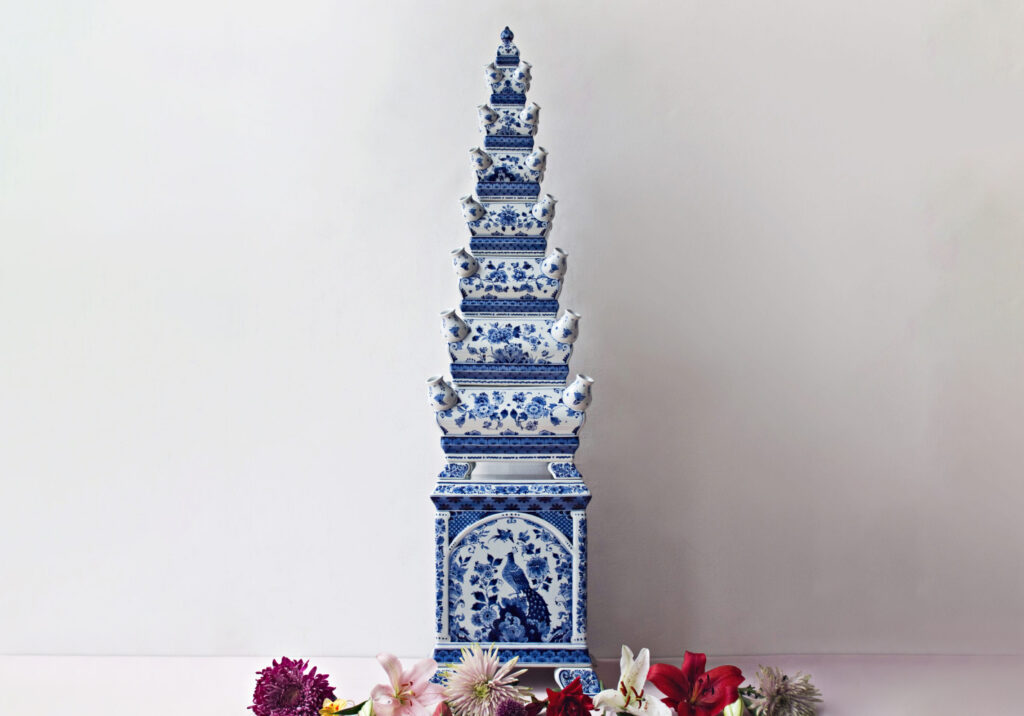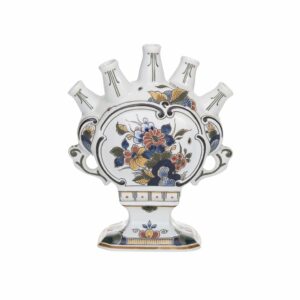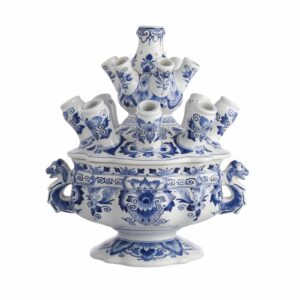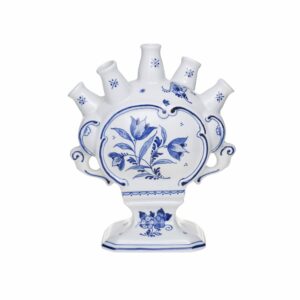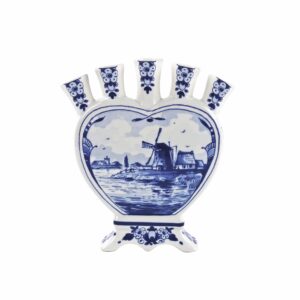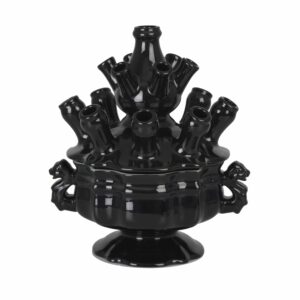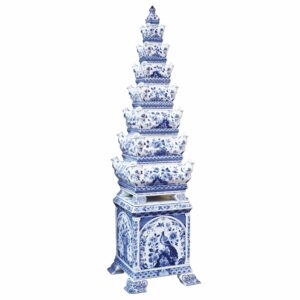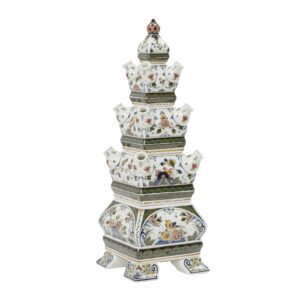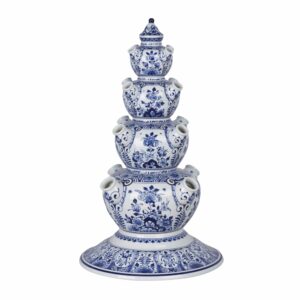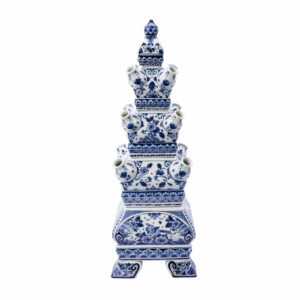History of the tulip pyramids and tulip vases
In the 17th century, the tulip was a very exclusive and expensive flower and the tulip vase allowed prominent people to show how prosperous they were. The tulip vase was therefore a real status symbol.
Although the tulip is nowadays inextricably linked to the Netherlands, that is actually unjustified. The flower originally comes from Asia, where it was cultivated by the Turks and Persians. It was not until around 1560 that these globes found their way to the wealthy of Western Europe via diplomats and merchants. In the Netherlands, the tulip only gained some fame around 1600, when it quickly became a sought-after object. There was plenty of trading and speculation, which eventually led to a true ‘tulip fever’. In those years, extraordinarily expensive flower holders were also produced for the special, expensive tulip bulbs – the tulip vases.
The heyday of these special flower vases with spouts followed towards the end of the 17th century. The vases with spouts were then marketed in all sizes and designs and were very popular; also with the House of Orange, given that the stadtholder royal couple William and Mary had four pyramid vases produced.
